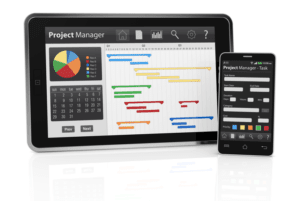
These insights go beyond basic reporting, uncovering trends, identifying opportunities, and providing a deeper understanding of your financial performance. This empowers you to move beyond simply reporting numbers and start using data to drive strategic growth. Real-time processing gives you instant access to your financial data, enabling timely decision-making and improved financial oversight. This up-to-the-minute view of your finances empowers you to react quickly to market changes and identify potential issues before they escalate.
- The system automatically performs calculations, categorizes transactions, and reconciles accounts, ensuring data accuracy and consistency.
- Once you know your needs, you can start evaluating different automation software options.
- Financial reporting automation is a powerful tool that can help businesses to save time, improve accuracy, and comply with regulations.
- Instead, the software automatically pulls data from multiple systems (including legacy systems) to generate reports in a timely manner and move them through any necessary approval processes.
- The cost varies depending on the size of your business, the complexity of your needs, and the chosen software.
Everything you should know about accounting automation

Yes, financial reporting can be automated using tools that streamline data collection, processing, and report generation. These tools connect data sources, extract relevant information, and generate reports based on predefined templates and rules. AI-powered solutions like Nanonets can accurately capture data from various financial statement formats, streamlining the process and reducing manual effort. At its core, it leverages technology to streamline financial data collection, processing, and presentation. From automating data entry to generating complex reports at the click of a button, it’s transforming how finance teams operate.

Generate and Distribute Reports
Learn the importance of finding the best automated data preparation tool, along with SolveXia’s advanced data preparation capabilities. Out of all the potential AI automate a companies financial statements applications in finance, personalized financial insights and recommendations are perhaps the most exciting. They then collect and match up your financial data so you get up-to-date and error-free information. Navigating the maze of regulatory requirements, including GDPR, Sarbanes-Oxley, and Basel III, can be daunting for growing startups. As your business expands, so does the complexity of complying with these ever-changing standards.

Developing New Automated Processes
- Our Al-powered front door meets business users where they live – in Slack, Teams, email, and more.
- An example of document automation is automated invoice processing, where OCR extracts data from invoices, categorizes transactions, and syncs them with accounting software like QuickBooks or Xero.
- By upgrading to Phocas Business Planning and Analytics, your finance team can enhance collaboration, reduce the time spent on administrative tasks, and focus on becoming strategic financial advisers.
- This is particularly useful in large spreadsheets where errors can easily go unnoticed.
- While AI can help catch errors, it’s always a good idea to manually review your work as well.
- This means ensuring that information fed into financial reporting automation software (i.e. transactions, receipts, invoices) is verified before reports are generated.
Financial data is key to getting deeper insights into business performance and enables you to pull together financial reports that help you make informed decisions. Online Bookkeeping However, as companies gather more data, financial reporting can quickly become a headache without the right financial reporting system. Automated financial reporting tools often include pre-built templates and customizable dashboards to streamline reporting and data visualization. Pre-built templates provide ready-to-use formats for common financial reports, such as income statements, balance sheets, and cash flow summaries.
- You can learn more about how HubiFi integrates with your existing systems on our integrations page.
- Offering the whole organization governed access to financial data through an intuitive user-experience reduces the onus on the finance team.
- Make sure everyone understands how to use the new tools and how they fit into the overall financial reporting process.
- But integrating an AI solution into your financial process isn’t a one-time event.
- Continuously monitor the performance of your data extraction system and identify areas for improvement.
- It offers a range of features designed to help lenders make informed credit decisions.
Automating financial reports means accountants can free up their time from manual data entry, report generation, and reconciliation tasks. This shift allows FP&A teams to focus on revenue-focused tasks like analysis and strategy development. Finagraph is another innovative solution in the automated financial statement spreading space, known for its focus on small and medium-sized enterprises (SMEs). The solution is designed to make financial analysis more accessible and actionable balance sheet for businesses that may not have the resources of larger institutions.


